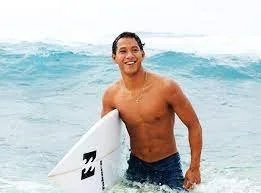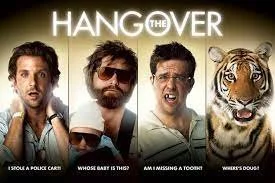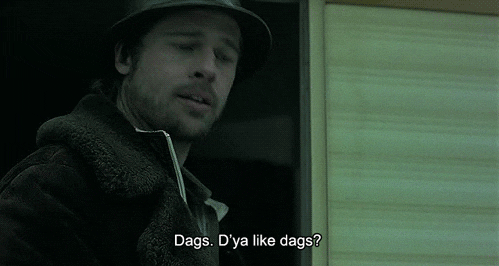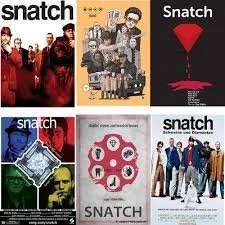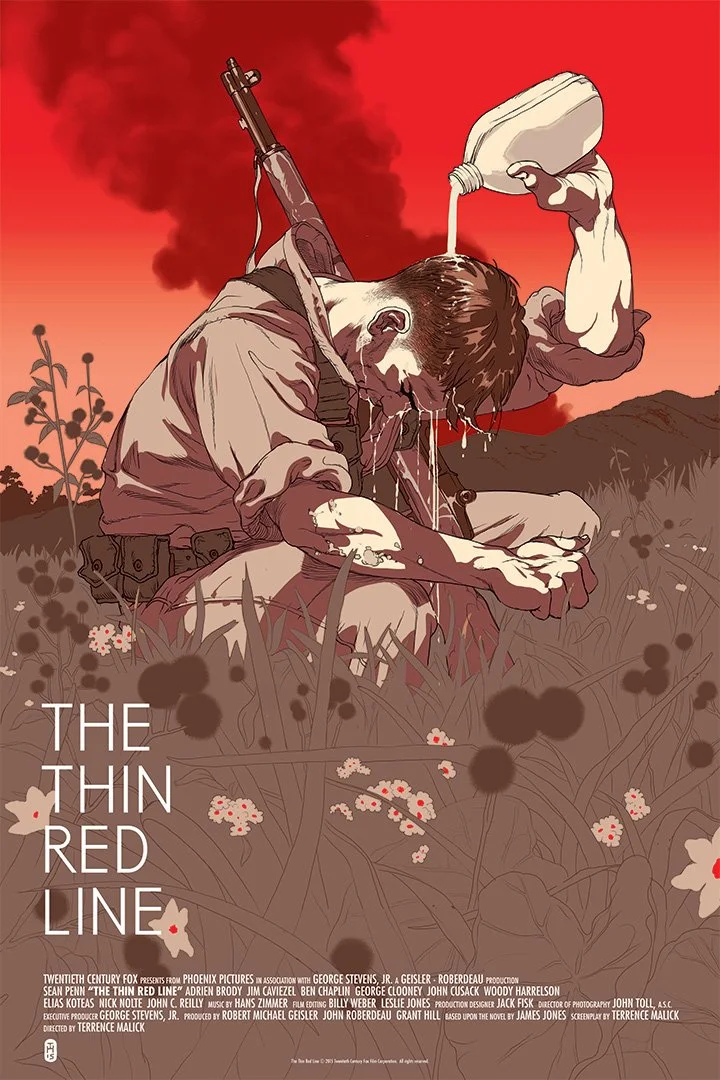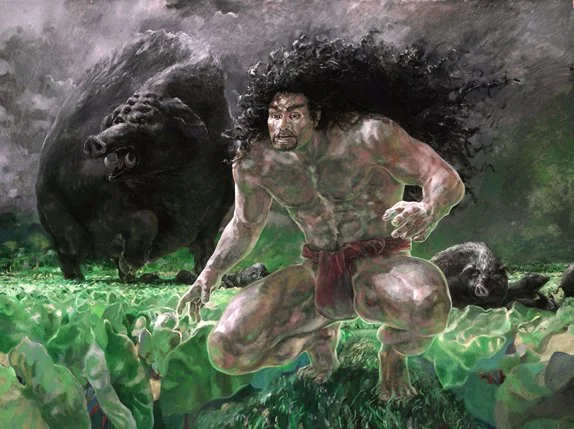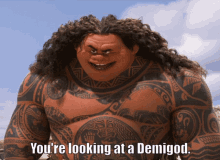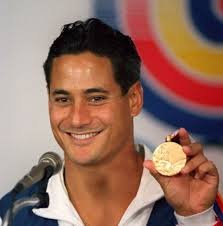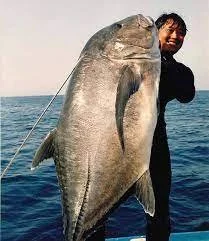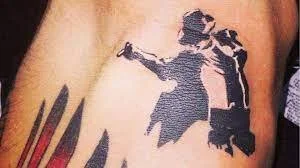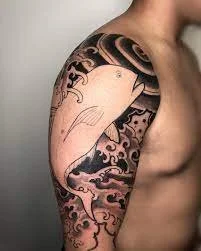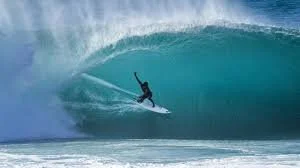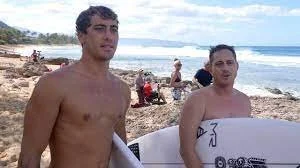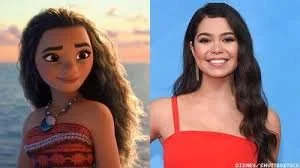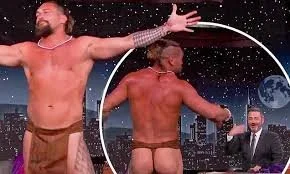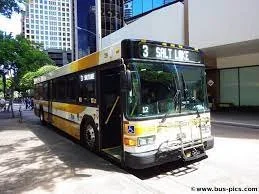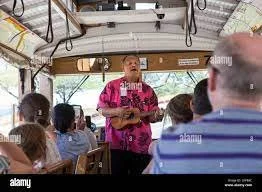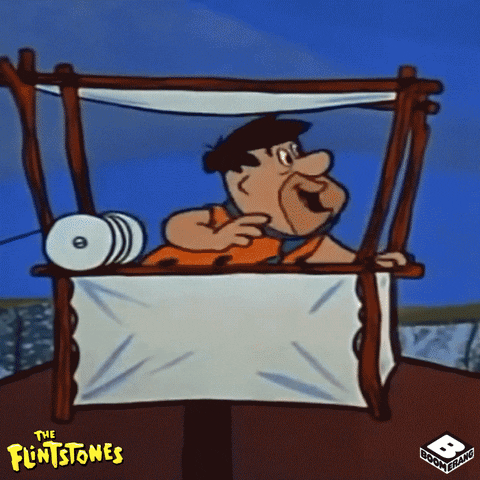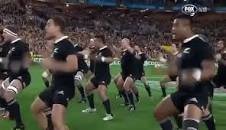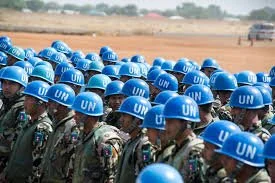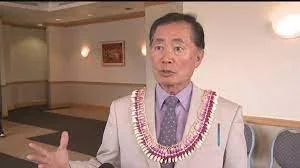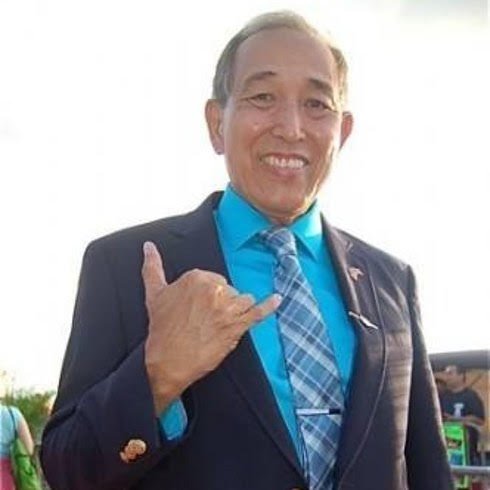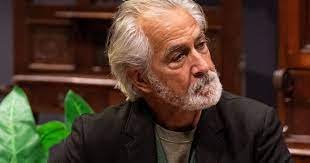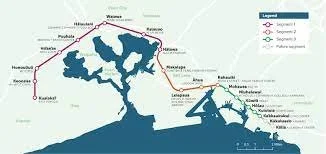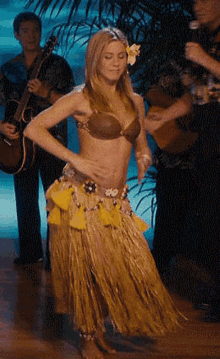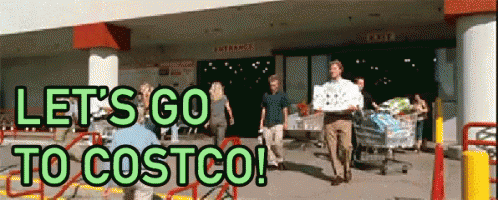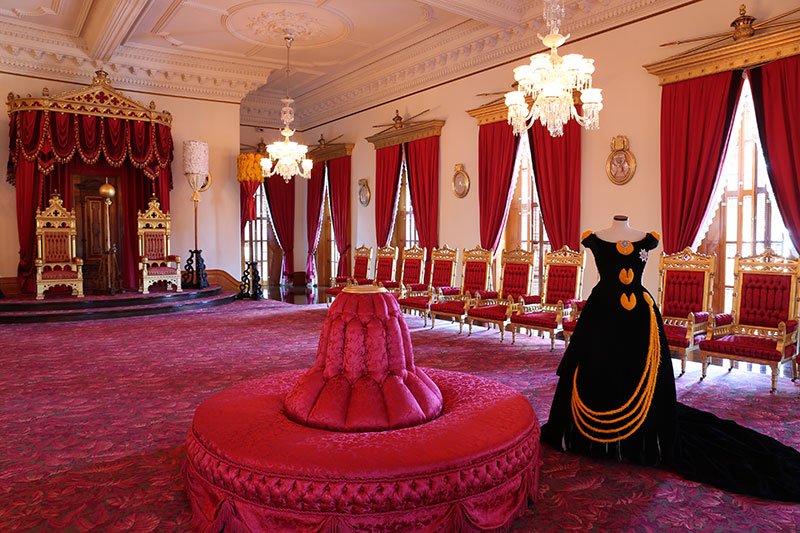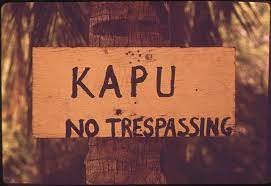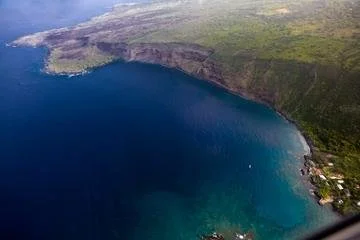The only way to get hold of liquor was to distil it oneself ... 'raisin jack' or... 'swipe', which was a Hawaiian word for bootleg liquor... In my outfit we got blind drunk every chance we got... We made our 'swipe' by stealing a five-gallon tin of canned peaches or plums or pineapple from the nearest ration dump, and putting a double handful of sugar in it to help it ferment, then leaving it out in the sun in the jungle... It was the most awful stuff to drink, sickly sweet and smelling very raunchy, but if you could get enough of it down and keep it down, it carried a wonderful wallop.'
James Jones – The Thin Red Line
A story on Hawaiian Swipe from 1900.
Swipe is a potent Hawaiian brew - “homemade distilled beverage” - made of coconut or pineapple juice or prickly pear cactus or whatever fruit juice is available, catalyzed with yeast and sugar and raisins and left to ferment in the sun.
During World War II native concoctions like Jungle Juice and Raisin Jack and Swipe helped soldiers numb the sting of the War in the Pacific for a few hours. Swipe is a powerful elixir born from isolation and shortages, but in modern Hawaii, Swipe is still a local favorite, primarily among the Hawaiian locals who prefer their fish fresh-caught from the ocean, with poi on the side.
Just getting the stuff down is a display of Hawaiian pride.
Menehune at work. Only by night.
Swipe is not for everyone and it effects everyone differently, but in this story, the potent Polynesian homebrew magically turns a crew of workaday Hawaiian men- and one woman - into criminal masterminds with supernatural powers. This batch of swipe made from OPP – Other People’s Pineapple – is a magic batch which gives these Hawaiian men super powers and turns them into a combination of menehune – leprechaunish creatures who only operate at night - and kupua, which Wikipedia defines as:
“…a group of demigods: heroic tricksters.
Hawaiian myths and legends abound with such characters. They are traditionally described as monsters having the power of appearing in different kinds of bodies. They usually have cruel and vindictive characters and are ready to destroy and devour any persons they can catch. There are, however, many kupuas of kindly spirit who give watchful care to the members of their own families.
Many Hawaiian kupua are considered as gods having a double body, sometimes appearing as a man and sometimes being able to change shape, into an animal, vegetable, or mineral form. The latter form always possesses supernatural powers.”
The kupua Kamapua`a can be a man or pig, but he can also take on the form of the humuhumu nukunukuāpua`a fish, as well as various plants such as the `uala (sweet potato), kukui (candlenut tree), and the `amau`u tree fern.
Some kupua have no kinolau, but are demigods in human form. Though they do not transform, they have supernatural abilities beyond humans. Māui, known in contemporary times as the Hawaiian Sup`pa Man, is a kupua who remains in human form. Māui is an example of a benevolent kupua. He created the Hawaiian islands by hauling them up with his fishhook, lassoed the sun to create longer days for work in the summer, and held up the sky with the help of his father.
Hawaiian supaman.
Maui the trickster, shape-shifting demigod from Moana.
Perhaps the most famous kupua is Maui, made famous by the movie Moana: “He was a Demigod of Wind and Sea. He was a warrior ... A trickster. A shape shifter who could change form. With the power of his magical fish hook. And his name was Maui.”
Li’ dat. It’s not too hard to imagine lurking inside every Hawaiian there is a rascal and a demigod and a shape-shifter who wants to do good and protect the aina and the people. Swipe unleashes that in this group of Hawaiian men - and one woman.
HUI PAU HANA/TEAM KUPUA/THE COMMITTEE OF SAFETY
Every Friday afternoon, these are the Hawaiians who meet for a “pau hana” (end of work) session to smoke and drink and surf and play ukulele and steel guitar and sing and talk story and shrug off the work week and prepare for the weekend.
Swipe begins with them meeting on November 11 - the anniversary of the death of Queen Lili’uokalani - around the base of her statue by the Hawaii state house.
(With images of Polynesian/Pacific Islander/other actors/athletes to give some idea of the age of these characters and what they might look like and who might portray them)
KEONE “HAPA” KALUHIOKALANI
Hapa is half Hawaiian/half African American, a graceful Polynesian dancer and a badass MMA fighter. And he’s bisexual = hapa is the Hawaiianized word for “half.”
His name is Keone but everyone calls him “Hapa.” Why? Because he is a half Hawaiian/half African-American man who works as a Polynesian dancer but is also an MMA fighter. Think of Greg Louganis in his Polynesian prime mixed with Buttons Kaluhiokalani - Hapa is the very model of masculine, muscular, Polynesian grace dancing for the tourists at Germaine’s Luau and Polynesian Cultural Center, but also an okole-kicking badass in the octagon.
Pound for pound, the Hawaiian ulua is one of the fiercest game fish.
His fighting name is Ulua, in honor of the badass fish that all Hawaiians yearn to catch.
Keone/Hapa hides a lot of confused, pent-up emotion behind his serene smile: his mixed ancestry, his troubled home life as a youth, and also the fact that he’s gay/bisexual = Hapa is not altogether happy.
Keone’s heroes are prominently tattooed on his arms and torso: Hawaiian surfer Buttons Kaluhiokalani and Barack Obama but also Muhammad Ali and Michael Jackson.
When they meet at the statue of the Queen and he sees Ink has returned from the mainland, Hapa asks her to ink Colin Kaepernick on his back. Hapa respects the kneeling quarterback for being as brave as Muhammad Ali.
HAPA’S TATTOOS
Hapa is decorated with tattoos of his Polynesian and African/American heros: Ali, Michael Jackson, Obama, The Rock, Prince, Duke and an ulua.
Muhammad Ali is Hapa’s biggest hero - both as a fighter and someone willing to stand up for what he believes in. That becomes important at the end of Swipe - when Hapa makes an impassioned argument that they should not sail off to Fiji and try to disappear, but they should turn their sailboat around and return without fear to Oahu to face the music for all they have done under the influence of Swipe.
Hapa argues: That is what Ali would do, and now Kaepernick: Stand up for what they believe, and damn the consequences.
Hapa is kind of like Brain Eater - he doesn’t say much, but when he speaks, his friends listen. And those two are you want around if trouble flames up.
Hapa is soft spoken, physically beautiful, a graceful dancer and a tiger in the Octagon. An interesting character. Kealoha feels good mana from Keone: He is the most beautiful man Kealoha has ever seen, even if he is half-black, and mahu.
SURF INSTRUCTOR KOLOHE
Kolohe is a young surf instructor and part time gigolo, who sincerely loves teaching people to ride waves – especially mainland chicks. In his early 20s, Kolohe is also a promising professional surfer who is held back by his fear of Pipeline. A Hawaiian afraid of a Hawaiian wave bothers Kolohe, and that deadly spot on the North Shore is Kolohe’s Moby Dick.
Kolohe struggles financially like most young Hawaiians and his goal is to raise $5000 to buy an outrigger canoe and take tourists on rides off Waikiki for $50 each.
SHADES OF KOLOHE
A 20-something surf instructor and pro surfer who don’t like Pipe and needs to overcome his fear of that spot.
Kealoha isn’t too sure about Kolohe’s mana: Kealoha feels there is a good Hawaiian under there, but he is buried under a 21st Century head full of video games and rap music and pussy obsession and just the pressures and distractions of being young in the 21st Century.
TATTOO ARTIST NICOLETTE “INK” FROISETH
A local girl who has just returned to Hawaii after three years running a tattoo parlor in Orange County: “From Santa Ana to the aina.” She kisses the ground and says the mainland is “shopping malls and shitheads” and will never leave Hawaii again.
“Ink” is the nickname for Nicollette “Ink” Froiseth, the only female member of Hui Pau Hana. She is a tattoo artist who just moved back to Hawaii after three years in California. Ink ran a tattoo parlor in Huntington Beach and came away from that experience with a deep disdain for the mainland – especially Orange County: “Shopping malls and shitheads,” is all Ink will say about the experience. Ink is very very glad to be back in the aina.
When she addresses the statue of the Queen at their first meeting, she vows to never leave again although she is saddened to see her native Oahu being overrun by those same shopping malls and shitheads. Ink’s ambition is to open a tattoo parlor somewhere in Waikiki.
Kealoha doesn’t like Ink. He thinks she is vulgar, and as Hawaiians say she “shows teeth” in how she dresses and acts. As far as Kealoha sees it, Ink is too tainted by the 21st Century, her own confusion and two years on the mainland.
To Kealoha, Ink is stained and tainted by the modern world and the mainland and might be irredeemably vulgar as the tattoos she plasters on people.
RASCAL GAMBLER/INTELLECTUAL/TEACHER VEGAS POMAIKA’I
Vegas Pomaika'i was named by his gambler parents who met, married and conceived him in Las Vegas. Vegas’ parents were very successful gamblers who invested their money wisely and left their son with several homes on Hawaii and enough money to do whatever he wants - when Vegas was a teenager they died in a car crash on that crappy, dangerous highway between Vegas and Los Angeles. Vegas raised himself. The ocean helped.
SHADES OF VEGAS
A chick-chasing rascal like Kolohe when he was younger, Vegas has matured into a responsible, highly-intelligent man who teaches Hawaiian language and history at Kamehameha School. And he rehabs women who are strung out on drugs or emotionally damaged. Big pot smoker.
Vegas could have been a screw up or a scholar, but he decided to do both. What Vegas wants to do is collect passive income from all his paid-for properties, smoke a lot of quality indica and hang out with his friends, but also volunteers as a teacher of Hawaiian language, culture and history for seventh graders at Kamehameha (or Punahou) School.
Vegas lives an idyllic life in Hawaii. He has a family home on each side of the island: One on the beach in Kailua, a house high and quiet in Pupukea Heights and an apartment at Makaha.
The AirBnB phenomenon has been a gold mine for Vegas as he rents his places out for hundreds of dollars a night - and has waiting lists on all of them.
The view over the top of Waikiki to Diamond Head from Vegas’ bachelor pad above the Wailana Cafe.(RIP 1970 - 2018)
Vegas has a fishing boat in the Ala Wai Harbor he sometimes sleeps on, but his main residence is the penthouse atop the Wailana Cafe (RIP 1970 - 2018) - the former residence of Wilt Chamberlain.
Which is fitting, because Wilt Chamberlain claims to have slept with 20,000 women. Vegas is a sort of sexual kupua - a shape-shifter who has spent many decades pursuing the unending flow of beautiful women who come to Waikiki looking for action.
Vegas is tall, handsome, sophisticated, tattooed and can speak pidgin or dissect Shakespeare with equal ease. His hobbies are standup paddling, playing poker, playing Monopoly with his many properties and chasing/seducing/ befriending/ helping/fighting with women.
Vegas loves women. He loves them all: short, tall, dumb, smart, depressed, elated. He is a former sex addict turned love addict who just loves women. He owns a bar in Waikiki where he hires a steady flow of young, bright-eyed mainland girls. In his free time he hangs out at Waikiki and takes women surfing or standup paddling to improve their mental and/or physical health.
Vegas loves his life. He lives it well.
When he was younger, Vegas was all about “making oof” with chicks - as many as possible. Now that he is older and has mellowed, Vegas operates a kind of informal rehab in which he takes strung out, troubled girls under his wing and out into the ocean and uses the power of the sea, and exercise and the sun, to burn away their dysfunctions.
And then he “Shows them the aloha,” is how Vegas calls it, and he is blessed with a great deal of aloha.
Vegas looks like a scoundrel but he is the smartest of his group of his friends. He is the historic and mythical mastermind/justifier for all the tricks he and his friends pull as they transform from Hui Pau Hana to Hui Kupua. It is Vegas who figures out the Swipe somehow transforms them into kupua and he enlightens his fellow hui members to the backstory of the kupua. He is as astounded as the others by the powers of this magic batch of Swipe, and he is just as game as them to see where their pranks lead them.
Kealoha understands Vegas and admires him very much - not just for all the women he has pulled in his time, because he knows that under the scoundrel grin, there is a decent man and a good Hawaiian - even if he is half pake.
Vegas is a very smart guy, and Kealoha appreciates smart people.
BUTCH THE SINGIN’ BUS DRIVER
T’ree hundred pounds of singing happy Hawaiian. Butch is a driver on the Number T’ree bus and greets everyone with aloha. But his big Hawaiian heart is saddened by the drugs and homelessness and mental illness and increasing despair he sees around Honolulu and Waikiki.
Butch is a big, happy Hawaiian who has been a city bus driver for 25 years and has driven every possible route around Oahu. Butch has a heartful of real aloha, but his heart hurts as he sees Oahu at ground level every day.
Butch says he suffers from “the curse of empathy” as he sees a lot of lonely, needy Hawaiians who ride his bus: Families with too many kids they can’t support, older Hawaiian men with gout, drug addicts turned into zombies by meth, clueless tourists who will be easy pickings for the thief population of Waikiki. An ever-increasing population of lost souls.
Butch wants to help them all, warn them all, love them all.
Butch is also a natural-born Hawaiian musician, a massive man who somehow plucks the sweetest notes from his ukulele with his t’ick fingers. Butch sings like an angel, and does tear-provoking covers of popular songs – from Beethoven to the Beatles to Beyonce - on his ukulele.
When Kealoha offers that new batch of pineapple Swipe, Butch makes up a song on the spot:
OPP, how can I ‘splain it.
I’ll take you frame by frame it
O is for other, P is for People scratchin’ temple
The last P…. well… dat for pineapple!!!
Kind of a cliche - a big, happy Hawaiian who plays ukulele and sings funny songs - but Oahu has Butch-kine dudes running around everywhere.
Kealoha loves Butch. He is the real deal: 300+ pounds of sincere Hawaiian aloha. But like the song Hawaii ‘78, Butch is a little bit happy, a little bit sad.
He sees a lot of needy, hungry, mentally ill Hawaiians and all kine people on the bus. He wants to help them all, but his aloha is spread thin.
BUZZY THE FRED FLINSTONE-ISH TOWER CRANE OPERATOR
Buzzy is a union construction worker who operates cranes and heavy equipment on projects all around Oahu. He earns a good living doing this work, but sometimes finds his Western work ethic competing with his Hawaiian pride as he works on projects that are blotting out the view of the mountains from the sea, adding to traffic, and turning up ancient Hawaiian villages and gravesites.
Buzzy has no interest in disrupting the bones of his ancestors, and it bothers him more than a little bit that his haole bosses sometimes skirt the rules to get their projects done on time.
THE ROCK WOULD ROCK THIS ROLE
A Hawaiian Fred Flintstone, Buzzy loves his island, loves his family and loves his job - swinging 360 degrees, 400 feet over Honolulu as a well-paid Tower Crane operator. But he worries about what he’s doing to the aina.
Kind of a Hawaiian Fred Flintstone, Buzzy loves his job working as a Tower Crane operator - an erector set on steroids. He has a big, noisy, troublesome family out in Ewa Beach and while he loves them and works hard to care for them, he also loves the peace and quiet and sovereignty of his 8 - 10 hours a day in the cabin of his tower crane, overlooking Honolulu and Waikiki.
(At some point in the story, Buzzy watches Moana with his young daughter who asks him if magical characters like Maui the Demigod actually exist. Buzzy is tempted to tell his daughter that he is a shape-shifter and a kupua, but he resists the temptation.)
Hawaii residents have a lot to protest about, from tainted water to telescopes.
Buzzy lives on the westside and has seen the traffic get progressively worse, every year. He can see the Honolulu Rail Transit Project off on the makai side of the highway as he drives to and from work, but he has to wonder: Are more people and houses going to improve life on Oahu?
Buzzy doesn’t think so, and yet his livelihood depends on it.
Kealoha likes Buzzy but Kealoha has a problem with overpopulation and overconsumption and the overdevelopment of Hawaii, so he secretly disagrees with one man bringing that many kids onto an island and into a world that is already dysfunctionaly over-populated.
SAI “BRAIN EATER” RAGOGO - MELANESIAN MAN OF MYSTERY
Fijians are tough and can take the heat in more ways than one. They are prized as United Nations blue helmet peace keepers.
The biggest and meanest and silent but deadliest of the Pau Hana crew is Sailasa Ragogo – aka Brain Eater – a massive Fijian who served many years as a United Nations peacekeeper. Brain Eater is a Melanesian Man of Mystery to his Hawaiian friends. They know he was a UN blue helmet but don’t know what kind of trouble he got into as a peacekeeper in the Middle East. They also don’t know why Brain Eater won’t – or can’t - go home to Fiji.
A savage-looking native of what Captain Cook called The Savage Islands, Sai Ragogo works as a bouncer at a strip club in Hawaii, but also has a remarkable talent to repair computers, radios and other electronic equipment.
FACETS OF BRAIN EATER
Sailasa “Brain Eater” Ragogo is a savage-looking Fijian who has served around the world as a United Nations Peace Keeper. He is a brute who is skilled at building and repairing electronics. His Hawaiian friends don’t know why he can’t or won’t return to Fiji - but they don’t ask questions. They’re a little frightened of him, but glad to have him around when trouble is brewing.
Like Butch and his ukulele, it’s amazing Brain Eater can do such intricate work with his giant fingers. Sai believes there might have been an East Indian in his ancestral woodpile – and that explains his talent with math and computers and technology.
The Hawaiians don’t ask too many questions of Brain Eater. They’re just glad to have him around when life gets sporty.
Kealoha isn’t sure what to make of Brain Eater. Kealoha’s Polynesian brain doesn’t fathom Brain Eater’s Fijian brain. But Kealoha trusts Sailasa Ragogo and feels safe when he’s around.
The guy is a brut: Silent but deadly.
SWIPE MAKER KEALOHA
Kealoha is the mix-master catalyst to Swipe. An elderly Hawaiian who is living out on Kaena Point, preparing himself to cross over and meet his ancestors. Kealoha mixes a batch of Swipe using OPP - Other People’s Pineapple - and asks the statue of Queen Lili’uokalani to bless the batch - which she does maybe too well.
Kealoha Ka’imi is the heart, soul and spirit of Swipe. An older, 80-something Hawaiian who was born on a day of infamy into the wrong century. Kealoha is a 19th Century Hawaiian in his soul, and his soul feels very uncomfortable in the 21st Century.
Born on December 7, 1941 - the very day Pearl Harbor was bombed - Kealoha loved being a child in the 40s, a teenager in the 1950s and a young man in the 1960s. He loved the simple, quiet beauty of the Hawaiian Islands, and the sincere aloha that flowed around Oahu and was well received by the polite, well-groomed and appreciative mainlanders who stepped off cruise ships and propeller-driven planes.
But ever since statehood and passenger jets circa 1959, Kealoha has seen people become fatter, stupider, louder and more vulgar. He is profoundly uncomfortable in an increasingly noisy, crass, crowded and confusing Oahu.
Kealoha is obsessed with the ideas of over-population and overconsumption. Kealoha believes the planet is overpopulated by a factor of seven: If there are seven billion people on the planet, there should be one billion.
So Kealoha believes only one in seven people on earth have any business being here, and he looks at everyone through that filter.
Like a buffalo being pushed off the prairie, Kealoha tries to keep to the diminishing wild places of Oahu - where the mana is strongest. And to Kealoha, mana is the foundation energy of Hawaii. The energy it took to push the islands 10,000 feet above sea level, but also the fertility of that congealed earth, and the plants and animals that thrive off the aina.
The native natural energy - the mana - of Hawaii is strong, but it’s also finite and in his time, Kealoha has seen the modern world eat away at that energy, just as the ocean eats away the shore, and rain and the weather wear down Hawaii’s high mountains.
Kealoha is a kind of “mana-ometer” in that he can feel the good and bad energy inherent in people, places, things. For Kealoha, Hawaii’s diminishing natural places have the most mana, and he spends his remaining days in places like Kaena Point.
Kealoha knows he will be dying soon, and so he is purifying his body and soul for that day when his soul leaves the earth from the tip of Kaena Point, and his body returns to the earth.
Kaena Point is where Hawaiians believe souls leave the earth en route to the next world.
Kealoha is ending his life by living as simple and clean a Hawaiian life as he can: he catches fish, hunts pig and eats only what grows from the ground: taro, pineapple, bananas, other fruits and vegetables that are part of the native Hawaiian diet.
Kealoha has an old Ford van and lives in a cave near the end of Kaena Point - a cave that runs under the mountains and allows Kealoha to pass under the Waianae Range from the west side to the North Shore without having to drive into the 21st Century.
Kealoha tries to avoid going south of Waianae, Wahiawa and Waimanalo. But as the story of Swipe begins, Kealoha grudgingly, grumpily drives from Kaena Point into Honolulu on November 11th, to meet his friends in Honolulu at the statue of Queen Lili’uokalani. Kealoha is going to join his friends in placing leis around the neck of their queen, sing songs of love and tribute to her, drink and smoke and celebrate Hawaii’s last monarch.
As he drives, Israel Kamakawiwo'ole’s Hawaii ‘78 is playing on the soundtrack in Kealoha’s head: This is a sad song and a beautiful song and it fits Kealoha’s mood perfectly, as he sees both the sadness and beauty in a Hawaii that is being transformed - “haolified” as Kealoha calls it.
To Kealoha, the essential irony of Hawaii is that what nature laid down makes Hawaii the easiest place in the world to get by: Food and beauty are abundant. But the modern world has corrupted that easy life with the Seven Deadly Sins, and now Oahu has become too crowded and congested and expensive, making it impossible for most Hawaiians to live a decent life in their own land. Kealoha is not alone in feeling this way.
Kealoha drives into Honolulu with one hand on the wheel of his trusted, rusty Ford van and one hand on a five gallon Menehune water bottle full of a fresh batch of Swipe. This batch is made from OPP – Other People’s Pineapple - using a recipe he got from Bunky Bakutis, who got it from Boogie Kalama who got it from Pops Aikau: Pineapple juice, brown sugar, yeast, raisins and a lot of Hawaiian sunshine.
For Kealoha certain music has powerful mana: Led Zeppelin, Beethoven, Duke Ellington, Bruddah Iz. He listens to music as he drives grudgingly through the November 11 traffic - which is surprisingly light, because November 11 is also Veteran’s Day, and a holiday in Hawaii.
Kealoha passes through Makaha and Waianae and Nanakuli, past the Disney resorts - seeing and feeling everything - some good mana, some bad mana.
Kealoha does not like Kapolei. The place is being “haolified” at a rapid rate with strip malls and housing developments and the Honolulu Rail Transit Project - an astonishing, wasteful expenditure of billions of dollars on an island of just over a million people - and other foreign constructions that Kealoha feels are an insult to the fundamental aina of Hawaii.
But the greatest insult to Kealoha is the Kapolei CostCo, which is built over the land where he grew up. Kealoha believes humans are overpopulating and over-consuming at an appalling pace - and as he circles CostCo in his van, he sees too-large families - haole and Hawaiian - scurrying in and out of CostCo like army ants - devouring, consuming.
THE HAOLIFICATION OF KAPOLEI
Kealoha pushes on and drives in the shadow of what he considers another insanely wasteful project - the Honolulu Rail Transit Project, a snaking scar across the aina that is supposed to connect Kapolei with Ala Moana, but a project that is now going to end five miles short, and is insanely over-budget: Billions of dollars over budget.
Kealoha is Hawaiian to his core, and wasting anything is personally insulting to him. Billions of dollars thrown into the wind? Appalling!
Such incredible waste. A $10 billion rail transit project that Hawaiians might not even use.
Kealoha grumbles about all of this as he drives out of Kapolei, through Aiea and Pearl City and all the homes and population and concrete and clutter of what was once the prettiest, quietest place on earth.
Pearl Harbor. The military. That giant golf ball that is supposed to be a long range air defense system. Billions of dollars for something that doesn’t work. Kealoha sees it all, and grumbles about it all.
Kealoha was dreading this drive - the modern world makes his headache and makes him feel weak. There was a time when Waikiki was his most favorite place on earth, but now it just brings him pain - physical and spiritual.
He is ready to leave this earth and will be going soon, but as he is human, he enjoys the camaraderie of his friends - even if he has to drive into a shitstorm of bad mana to see them.
The music Kealoha plays in the van sometimes mirrors what he is thinking and feeling. As he drives he listens to The Talking Heads explain why he is making this drive to meet Hui Pau Hana: His friends are important
It's over there, it's over there
My building has every convenience
It's gonna make life easy for me
It's gonna be easy to get things done
I will relax alone with my loved ones
Loved ones, loved ones visit the building,
Take the highway, park and come up and see me
I'll be working, working but if you come visit
I'll put down what I'm doing, my friends are important
Kealoha arrives into downtown Honolulu early because traffic wasn’t as bad as he feared - because of the Veteran’s Day holiday - so he drives around Waikiki a bit and sees Aloha Tower pretty much lost in all the construction. He longs for the 30s and 40s when he was a young lad, swimming for coins tossed by the tourists and making leis and hats with his aunties and selling them to the graceful Americans who flowed off the boats - groomed, polite.
Kealoha wonders what happened to manners. American manners. The Japanese now are how the Americans were from the 30s to the 50s. But now Americans are increasingly shabby and flabby, while the Japanese are groomed and graceful.
The simple, quiet aloha of Honolulu - buried and entombed by the concrete of the 21st Century.
But Kealoha makes it into Honolulu, finds a parking space and lugs that heavy, five-gallon jug of swipe to the statue of Queen Liliuokalani and gets there before the others.
Kealoha talks to the statue of the Hawaiian Queen as a friend and confessor. He tells here where he is living and preparing himself physically and spiritually to move on to the next world and meet his ancestors - maybe even the Queen herself.
Kealoha leaves ti leaf packages at her feet and drapes lei as high as he can get - around her outstretched arm.
He then pours out a cup of swipe into a plastic cup and pours it around her feet at the base of the statue. He explains to the Queen that he made the Swipe himself and it’s a “strong mix.” Kealoha asks the Queen to bless the batch of Swipe - but she overdoes the blessing - as we shall see.
Butch hops off the Three Bus and joins Kealoha. Butch engulfs the octogenarian in a giant hug and they sit and talk as Butch strums his ukulele and sings. Then they discuss each member of Hui Pau Hana as they show face at the statue of the Queen.
Butch updated Kealoha on the status of their friends and Kealoha analyzes them in terms of their mana - good and bad - their energy. Some of his friends are good Hawaiians deep down, others are too tainted by the modern world.
These are Kealoha’s friends, but he likes some more than others: Kolohe and Ink are young and too infected by the modern world. Buzzy is a good Hawaiian with a big heart but too damned many kids. Vegas is flashy on the outside, but Kealoha knows how akamai this guy is behind the stoned-out smile. Kealoha admires intellect and insight. Kealoha loves Butch, but has no idea what to make of Brain Eater.
NOVEMBER 11: THE ANNIVERSARY OF THE DEATH OF QUEEN LILIUOKALANI.
All the members of Hui Pau Hana are glad to see their grumpy friend - and that he had the aloha to drive all the way from the Moi Hole into the 21st Century.
They check out the five gallon bottle of Swipe and Brain Eater wonders if it’s a “strong mix.”
Kealoha assures them it’s da kine - made from Other People’s Pineapple - inspiring Butch to strum his ukulele and sing a song in tribute:
OPP, how can I ‘splain it.
I’ll take you frame by frame it
O is for other, P is for People scratchin’ temple
The last P…. well… dat for pineapple!!!
Brain Eater riffs on a traditional Fijian kava ceremony to pass out Hawaiian Swipe to his friends.
Brain Eater uses Fijian kava-drinking protocol to serve the Swipe all around. He easily picks up a 40+ pound Menehune water bottle with one arm and pours Swipe into half a coconut shell.
There is lots of hand-clapping and chanting as each man - and Ink - drinks a healthy swallow of the fermented pineapple.
And then, one by one, they approach the statue of the Queen and speak to the statue as if she were a confessor and long-lost friend.
And what these Hawaiians say to the Queen are an elegant exposition like James Bond and Vesper Lynd grilling each other on the train in Casino Royale: Their confessions and questions reveal more about who they are and what they want and sets up the motivations for many of the incidents to come.
Ink kisses the Queen’s feet, apologizes for living on the mainland for so long, and vows to never leave Hawaii again. She is very very glad to be back home on the aina. Ink tells the Queen her ambition is to open a tattoo parlor in Waikiki - but she needs $10,000 to get it started.
Kolohe confesses to the Queen that he’s stopped smoking so much pakalolo and is saving up to buy his own outrigger canoe - which he will name in her honor. All he needs is like five grand, but that’s a lot of kala for a surf instructor. He’s having trouble making rent and his wahine is threatening to walk out on him.
In perfect Hawaiian - with English subtitles - Vegas tells the Queen he is now teaching Hawaiian history and language at Kamehameha School and is encouraged by the akamai quality of some of the students he has. Vegas apologizes for still smoking a lot of pakalolo and also for not being married and creating new Hawaiians - or none that he knows of anyway.
Buzzy tells the Queen how his family is doing and details all of his kids, but expresses some doubt about the damage he is doing to Honolulu with his Tower Crane and the construction. He asks for the Queen’s forgiveness if he is disrespecting the aina.
Butch talks to the Queen about his job as a bus driver, and how what he sees is sometimes sad and getting sadder: Homeless, drug addicts, men with gout. Butch wants to help them all, and he’s sure the Queen understands.
Hapa does a a few graceful Hawaiian dance steps in front of the Queen and tells her how it’s all going. He has a big MMA fight coming up. He shows her his new ulua tattoo and says that’s his ring name - because he’s strong and fights like one ulua. Maybe he talks to her “Queen to Queen” and winks at her.
Brain Eater isn’t Hawaiian and does not talk to the Queen, but he is overseeing the Swipe. When all the others are done confessing to the Queen, Brain Eater holds up a cup in tribute to the Queen and drinks a whole bunch of it.
There is drinking and carousing and lots of singing. All these people are musical, with that talent seemingly accelerated by the Swipe.
Kolohe picks up a ukulele and sings Old Man to Vegas:
Old man, look at my life
I'm a lot like you were
Old man, look at my life
I'm a lot like you were
Old man, look at my life
Twenty-four and there's so much more
Live alone in a paradise
That makes me think of two
And it’s true, because Kolohe is 24 and he’s a bit of the same rascal Vegas was when he was 24.
All kine stuffs happens as the night wears on and the Swipe takes effect. Looked over by the Queen without emotion, Brain Eater the usually taciturn Fijian all of a sudden breaks into his traditional Fijian meke (war dance). It’s fierce, scary, sensual and that inspires Ink to join him in a seductive hula that changes Kealoha’s impression of her. This tattooed, tainted girl can move like one Hawaiian when she is inspired - and she is inspired.
Jennifer Aniston rocking the hula.
Inspired by the Fijian, Ink inspires all the men and that is another instant effect of this Swipe - it goes straight to their bones and their groins.
Even Keone - who is not interested in women - is inspired. He joins Ink in her hula dance and makes it even sexier. And that’s the last thing any of these Hawaiians - and one Fijian - remember until the next morning. They disappear into the night, leaving the Queen covered in leis, with ti leaves and lots of Swipe at her feet.
The Kualoa Ranch - Ka’a’a’wa Valley as seen from the sea.
The next morning Hui Pau Hana wake up high in the Ka’a’a’wa Valley, on the Kualoa Ranch – a tourist attraction where many famous movies and TV shows have been filmed. None of the Hawaiians know where they are or how they got there. As they are getting their wits about them, they see a chain leading off into the bush. They follow it to a monster truck they recognize as the personal ride of a notorious Hawaiian gangster named Joey Tanaka.
And as they are scratching temple about that, they also wonder why there is a Swipe ATM in the back of the truck.
One Hawaiian says: “Looks like one upa’a in there, yeah?”
Another Hawaiian says, “Pork tastes goood. Bacon tastes gooood. Let’s gut it.”
So they pry it open and find it stuffed full of cash - like $200,000 worth.
“Brah! Piha ka puaʻa hāpai i ke kālā!” Vegas says, meaning the dead pig is stuffed with lots of money.
Kinda like this, but at night but with a bunch of tattooed Hawaiians wearing malo throwing shakas.
The confusion and mystery only deepen when Brain Eater gets a signal on his smartphone and tunes into the local news. There is a clip of an ATM heist in Waikiki the night before. A group of tattooed men wearing only malo (loincloths) are seen operating quickly and efficiently to fasten ropes to the defenseless SWIPE ATM and rip it out by the roots. The men all smile at the camera and flash shakas as they drive away - in Joey Tanaka’s truck.
The Hawaiians in the security video know they are being recorded, but they don’t care. The Hawaiians way up in the Ka’a’awa Valley don’t know what to think. The Hawaiians in the video are them, but it’s not them.
And yet there they are with Joey Tanaka’s truck and an ATM full of cash.
And the next question is: What do they do with the truck, and the money, and themselves?
Vegas uses his knowledge of Hawaii history to argue that the bank that owns the ATM has been ripping off Hawaiians going back to the 1880s. Vegas feels justified in keeping the money, and he floats a moral challenge at the souls of his confused but intrigued friends.
Most of the Hawaiians want no part of the money – or the possible trouble that would come with getting caught for stealing it. Butch is game. He strums a few bars from Been Caught Stealin’ and sings an impassioned argument, explaining how he sees Oahu at ground level every day, and he will gladly take every penny of that $200,000 and distribute it to Hawaiians in need – from free bus passes to sending elderly Hawaiian men to the hospital to get treatment for gout.
Butch knows the money will do some good, but won’t make a dent in all the neediness around Oahu.
Kealoha has similar sentiments. He knows there are oceans of need between Honolulu and Kaena Point and he might even get a CostCo membership to spend some of that money,
Kealoha calls the Hawaiian cops “Blue Meanies” because of the blue lights on the top of their patrol cars, and because they won’t leave him alone: “What the Blue Meanies gonna do? T’row me in jail? Shoots, I can get my teeth fixed in jail.”
Kolohe is tempted: Just $5000 of that money would allow him to buy a used outrigger canoe and go into business for himself - taking tourists out to sea at $50 a pop. He would have the boat paid off in no time.
But no, that money has bad mana - stolen money. Kolohe is western enough not to take it, and Hawaiian enough to wonder what bad things would happen to him or his passengers, going out to sea in a canoe bought with stolen money.
Ink knows the money would help her open a first class tattoo parlor - her dream - and she is sorely tempted, but something tells her not to take it.
Kolohe passes. Ink passes. Buzzy passes. Hapa passes. Vegas doesn’t need the money. All of them but Butch and Kealoha pass.
So most of the stolen money goes to those two Hawaiians: Butch and Kealoha but they don’t intend to keep any of it.
The men leave the truck and the ATM wiped clean - or maybe they hide it in a cave - for others to find, and make a long descent from the top of the Ka’a’a’wa Valley to the main road. As they walk, they realize they all feel good. All their muscle and joint aches and pains are gone, and they feel younger and stronger than they have in a long time.
Is that also a symptom of Swipe? They feel so good they forget to worry about the stolen truck, and the gangster Joey Tanaka, and the stolen money - or what their wives and kids will say about their disappearance.
On the way down, Vegas dials up a scene from Casino on his phone, in which Robert De Niro tells his fellow heisters not to spend the money foolishly or flamboyantly and draw attention to themselves. Kealoha and Butch get the message.
They all get home in different ways. Butch and Buzzy take the bus. Vegas calls Uber and Kolohe and Ink jump in with him. Hapa and Vegas and Kealoha shaka-hike - flagging down some locals passing by who have some aloha.
They all disperse from the bottom of Kualoa Ranch - all of them wondering what, exactly, is up, what happened and how did that happen?
In the aftermath of their first Swipe caper, Kealoha drives back toward Kaena Point with that Menehune bottle of Swipe in the back, about 3/4 full. Passing Kapolei, Kealoha goes to CostCo for the first time. He cautiously walks through the Gates of Hell wondering if he will be consumed by fire. Kealoha peels off some cash for a CostCo membership card - now he’s somebody - and then enters a giant cave of wonders.
Kealoha has fun buying a great many things he doesn’t need but others do. He loads up his van with toilet paper, bicycles, blankets, toys, SPAM, laptops, burner phones and other Hawaiian necessaries and luxuries.
He walks out of that CostCo pushing a pallet full of all kine stuffs. He loads up his van and spends the day distributing aloha and good to homeless camps along the west side - delivering a van load of aloha.
The Harbor homeless camp in Waianae - one of many places Hawaiians have been pushed to because of the cost of living. Kealoha brings relief and necessaries to The Harbor in the back of his van. https://www.civilbeat.org/2015/11/this-waianae-homeless-camp-is-not-what-youd-expect/
And so begins the transformation of Hui Pau Hana into Hui Kupua, and a mystical adventure that turns Hawaii upside down.
One long, eventful day later, Kealoha is back fishing at the Moi Hole, lost in solitude, talking to ancestors only he can hear.
The rest of Hui Pau Hana make it home and we get some idea of their family life.
Kolohe is fighting with his wahine over rent and just money in general, and maybe now he regrets not taking a handful of the money from the ATM?
Buzzy worries that his wife will wonder where he’s been, but he gets home to no drama and his wife explains it in such a way he understands their Swiped version covered those tracks as well.
Butch goes home to his wife and young son and they greet him joyfully and with no questions.
Ink is living with her parents until she can get her own place, but they have no questions.
Vegas answers to no one. He makes it home to his penthouse overlooking Waikiki and finds a very pretty girl waiting for him. She gives him a shoulder massage as he sits on the balcony, looking over the top of Waikiki toward Diamond Head, lost in thought. What just happened?
Hapa makes it home to hugs from his boyfriend. No questions asked.
Weird.
THE REST OF THE STORY
Every Friday, these men - and Ink - meet for Pau Hana and drink Swipe. They black out, and the stunts they pull escalate in daring, danger, illegality and meaning. The men wake up the next morning in some new meaningful and/or impossible place - the heiau overlooking Waimea Bay, around the pool at Doris Duke’s Shangri-La, the top of Mount Ka’ala - not knowing how they got there or what they did the night before.
GALLERY OF KAPU PLACES HUI KUPUA WAKE UP
Then they watch the news, see what they have done and are at the same time terrified they are all going to jail, but also amazed by the stunts they pull, and fascinated by this other side of themselves who are so brave, clever and daring.
These men right the wrongs of Hawaii, unafraid of ancient Hawaiian kapu or modern laws, which Vegas calls “Copu.” They call themselves Hui Kupua, and strike meaningful blows for Hawaiian pride – they never make a mistake, and never get caught.
Their acts are supernatural and meaningful – combining Hawaiian pride with Hawaiian aloha and but also a Christian Christmas spirit – as Swipe takes place between the anniversary of the death of Queen Liliuokalani on November 11, and the anniversary of the death of Captain Cook on February 14.
CHRONOLOGY OF KUPUA PRANKS: 11-11 to 2-14
The order of their stunts/pranks/tricks/kupua mischief goes like this:
Friday, November 10: All the Hawaiians get off work and gravitate to the statue of Queen Liliuokalani on the day before anniversary of her death. They drink the swipe, blackout and wake up in the Ka’a’a’wa Valley - somewhere on the Kualoa Ranch - which was a puuhonua in ancient Hawaiian times - a place of refuge. Once they get their wits about them, they find a SWIPE ATM in the back of a monster truck belonging to an infamous Hawaiian gangster. They debate whether to turn themselves in or keep the money. Some of the Hawaiians don't want anything to do with the money, but Kealoha and Butch take it, thinking they can use the money to do good for the multitudes of needy people in the Hawaiian Islands. They hide the truck and ATM in a lava tube and make way back to Honolulu.
Friday, November 17: ??????
Friday, November 24: On that Friday, Keone competes in the Man Up, Stand Up MMA event in Waipahu. Keone has a fair bit of anger in him, from being half-black, half-Hawaiian, and gay. For the fight at Waipahu, Keone listens to mysterious words of encouragement from Vegas, which turns him into a Polynesian buzzsaw who kicks ass in his fight.
The Pau Hana guys are all there to support Keone and they celebrate his victory by drinking more swipe.
They wake up the next morning deep within one of the fenced-off World War II bunkers in Kapolei. A place where Kealoha used to play in the 40s and 50s. It's not easy to sneak in there, but they did it.
They figure out where they are, get their wits about them and then Brain Eater goes online on his cell phone to see what they did this time.
Brain Eater finds a news story about how some industrious pranksters broke into the storage yard in Kapolei where the rail system are storing their concrete pilings. The pranksters somehow rearranged the pilings to make a statement that only people in passenger jets approaching or leaving Hawaii could read, from above.
Not sure what the message is.
Party tent on the beach at Ala Moana Beach Park
Thursday, November 28: A hurricane threatens Oahu and all the Hawaiian Islands. A Thanksgiving hurricane isn’t unprecedented - Hurricane Iwa hit from November 19 - 25 - but Kealoha grumbles it’s all a symptom of over-population and overconsumption and global warming and grumble grumble.
All the members of Hui Kupua bring their families to Ala Moana Beach Park for a Thanksgiving dinner. They set up tents as the sky darkens and the weather threatens. They manage to cook and serve dinner as the winds increase and the clouds thicken. The families all give thanks in their various Hawaiian ways, and as the wind begins to howl, the men pack up their families and send them home.
They stay behind and drink Swipe in the middle of the storm as the winds rage around them.
They wake up the next morning at the top of Mount Ka’ala - the highest peak on Oahu, which offers a spectacular view of the west side and North Shore as the trail end of the hurricane passes, and leaves behind an angry ocean.
The view from the top of Mount Ka’ala looking toward PEarl Harbor and Honolulu.
It’s as if the hurricane winds picked them up and deposited them there. As they begin the long walk down, Brain Eater gets a cell signal and finds a news item: The Sheriff is in Waikiki, making a speech. But it’s not about the hurricane, apparently. All they hear him say is: “I don’t know who did this. I don’t know how they did this. But: Shoots. Mahalo!”
On the streets of Waikiki, the storm clears to reveal a line of rascals all handcuffed together starting at the police station on Kalakaua Boulevard, passing the disapproving gaze of Duke Kahanamoku and then crossing the street and coming back down Kalakaua to end in front of the police station.
Turns out all of these people are guilty of bicycle theft and beach theft and purse snatching and they are the worst of the petty thieves that plague Waikiki - somehow rounded up by Hui Kupua.
This is a sad collection of meth heads, homeless, Hawaiians, Pacific Islanders and mainland dregs. You almost feel sorry for them, but remember how much inconvenience and pain they have caused with all their theft. And now the cops have them all.
Friday, December 1: ???? Not sure what happens here. Because this book is being written in real time, it will bounce off things that are happening in Hawaii at the time. Maybe a lava flow threatening a town, or something.
Perhaps Hui Kupua attend a grade school hula show where Buzzy’s daughter does the bird dance to Ka ipo lei manu. Kealoha drives all the way into town to attend, and he likes the mana he feels there: Young kids being introduced to the Hawaiian way of music and movement.
The hula show is outside on a beautiful winter night. After the show ends, the boys sit around and drink swipe and go off into the night. Not sure what prank they pull here. Would be nice if lava was threatening a town at the time, because that’s what they would do: Breach an illegal reservoir, because damming a Hawaiian creek is definitely not pono. That creek needs to run to the ocean. They breach the reservoir and flood a lava flow heading for a Hawaiian town. The water is enough to freeze the lava flow and divert it through a field of GMO corn - which many Hawaiians also consider incredibly un-pono.
People will be surprised to learn that seedcorn is the #1 agriculture product of Hawaii - most of it GMO. There could be a debate about GMO crops in Hawaii here.
Maybe Vegas isn’t exactly sure it’s wrong: “Gotta feed the world somehow.”
Friday, December 7: Something to do with Pearl Harbor? They wake up on the Missouri and have to get out of there quick.
December 15: Kolohe competes against Kelly Slater in the Pipe Masters and does well – pulling into a giant barrel and overcoming his fear of Pipeline. (But he doesn’t beat Slater). Kolohe and his friends celebrate with a swipe session in the parking lot at Sunset Beach – then go off into the night.
The next morning they wake up uncomfortably lying on sacred rocks in the heiau at Waimea Bay – an important and sacred Hawaiian temple which is both kapu and copu.
As the guys are all sorting themselves out and figuring out where they are and how they got there and what did they get up to the night before, Buzzy receives urgent texts from the bosses at his job site in town, asking him if he can come in on his day off.
This is unusual, so Buzzy drives from the North Shore to Honolulu, passing all the construction projects he has worked on, and wondering to himself how much damage Oahu can take.
The whole world seems to want to live on Oahu, and who can blame them? As he drives through all those empty pineapple fields, he worries about the future. If someone fired a starter’s gun to develop all that empty land, it would all be gone in 10 years or less. Auwe.
Buzzy arrives at the job site to find someone has climbed the ladder and broken into Buzzy's Tower Crane to stack a bunch of heavy equipment in a giant tiki of loaders and haulers. It’s a masterpiece of heavy metal engineering. Buzzy is above suspicion because he is an honest, hard-working man who loves his tower crane and would sooner drop a Ming vase than damage a loader or scraper.
But of course it's the other, swipe-influenced Buzzy who has done the rascal, impossible deed – making a very visible statue of protest using the machines that are disturbing the aina. Buzzy makes a show of being pissed to his bosses and then climbs the ladder to undo the damage he did. When he gets to his cabin he finds cops fingerprinting and DNA-swiping the cabin and he panics for a moment, but then realizes of course he will be all over it, because it's his Tower Crane.
And as Buzzy is unstacking that tiki of heavy equipment he looks over into the yard next to the construction site - which is home to an infamous tow truck company who make a fortune swooping up the cars of haole and kama’aina alike and charging hundreds of dollars to get them back.
All those tow trucks are also stacked like a tiki, but Buzzy has no interest in unstacking them, as dem guys have towed his wife’s car more than a few times, and caused a lot of trouble to hard-working Hawaiian families.
Fucking guys.
Friday, December 22: The Hawaiians gather for the opening of Ink's new tattoo parlor - financed in part with the proceeds from the ATM they swiped. The parlor is beautiful and at some point it comes out that Ink is Jewish and there is talk about how a Jewish wahine can have tattoos and still get into heaven.
The party goes on late into the night until the Pau Hana guys are the last ones there: they drink swipe and black out. The next morning they wake up in Morocco or the Middle East somewhere. They are in a room surrounded by colored light and Islamic architecture.
Where they stay?
The pool at Shangri La, where Hui Kupua wake up after another Swipe caper.
They are sleeping in a room at Shangri La, the impossibly lavish house of Doris Duke, a wealthy woman who spent the middle of the 20th Century building a pleasure dome on the other side of Diamond Head and filling it with a priceless fortune in Islamic art, jewelry, furniture and religious relics.
Salt water pool and poolhouse at Shangri La.
Once the boys figure out where they are, they don’t take too much time admiring the house. They are trespassing in a place that is heavily guarded. They bolt in the early morning, hop the fence and swim away from trouble like a SEAL team.
Back on land, they all dial up their smartphones to watch the news, but there is no news. Apparently they didn't do anything rascally the night before.
As one of the Hawaiians is reaching into his pocket for his smartphone, he finds an envelope with $1000 cash and a note: “Bring your families to the Mai Tai bar at Royal Hawaiian at 7:30. Then dial this number at 8:00.”
They do as they are told. They spend the day with their families in front of the Royal Hawaiian at Waikiki: surfing, swimming, canoeing, enjoying the ocean, all under the patient gaze of Diamond Head.
Diamond Head means a lot to these Hawaiians, as it is a brown, broad-shouldered symbol of Hawaiian pride and power that will never be blotted out by construction. These Hawaiians get a little jolt of energy when they look at Diamond Head - they are still in Hawaii.
As the sun sets, they are eating, drinking and being merry, spending that $1000 easily at the Mai Tai Bar, looking east toward Diamond Head.
As the clock approaches 8:00, the men are all looking at each other: What is going to happen this time?
Brain Eater dials the number at 8:00 on the dot. And you can hear all of Waikiki go "Ooooooooh!" as the always-dark-at-night Diamond Head lights up with a spectacular display of holiday lights. Hui Kupua have strung Diamond Head with Christmas lights and now there is red lava flowing out of the top of Diamond Head, and flowing down the flanks to spell Happy Chanukah, Merry Christmas, Mele Kalikimaka and other messages, in a variety of languages, including Japanese kanji.
It's one of the most beautiful things anyone has ever seen and the Pau Hana guys exchange knowing smiles and drink a toast to the geniuses who lit up Diamond Head.
Stringing a proud Hawaiian monument like Diamond Head with lights celebrating a Christian holiday is both kapu and copu, but the City of Honolulu decides to leave the lights up for the duration, they are so spectacular.
Friday, December 29: A day in the life of Vegas. He wakes up in his boat, swims in the morning, goes to the school where he teaches, goes standup paddling at Waikiki in the afternoon and as the sun is setting, he goes to the bar he owns in Waikiki - all the while looking at girls and meeting girls and talking to girls. Vegas just loves women.
Vegas goes to the bar he owns and talks to all the cute mid-west girls he employs there. He checks on the till and supplies and then goes in the back where his friends are sitting around a table, playing cards.
At this card game, Butch holds court with his theory on how Hawaii and Hawaiians can and should thrive: Grant native gambling rights to Hawaiians, put the casinos on ships, attract billions of dollars from China and the orient and with that money, the Hawaiian nation can transform Kaho’olawe into a Hawaiian homeland - as Larry Ellison is doing to Lanai.
There is a spirited argument about the pros and cons of Butch’s plan. They drink Swipe, and go off into the night.
The next morning they wake up on a pirate ship - the Treasure Seeker tourist boat, which is ported in Kewalo Basin. They are out in the middle of the Molokai Channel on a stolen pirate boat. What did they do this time?
Brain Eater gets a signal and finds that during the night, clever pranksters on the Big Island breached an illegal reservoir, flooded the lava flow threatening the town of Pahoa, and diverted the lava flow through a field of GMO corn.
As they sail the Treasure Seeker back to Oahu, there is a spirited argument about whether GMO is good or bad for Hawaii. Believe it or not, seed corn is the #1 agricultural product in the Hawaiian Islands - worth more than $240 million a year.
Hui Kupua just flowed lava through a big patch of GMO corn, but Vegas and others argue that GMO is vital for feeding an over-populated world.
Arguments aside, the Hawaiian breached an illegal reservoir, diverted a lava flow and saved a town: Triple play, brah! The Hawaiians are just astounded by how clever they are, and how they keep getting away with things.
Friday, January ??: Not sure. Something to do with the New Year? Maybe this is where Stolen Stuff Hawaii comes in. That’s a Facebook page dedicated to citizens reporting crimes all over Oahu. There is a great deal of car theft in Hawaii - Hondas and big trucks disappear like cats to coyotes.
On Stolen Stuff Hawaii in February of 2017 there was a story about a tourist couple who got off the plane, rented a car, drove out to Makaha and were watching the sunset, when a silver truck pulled up and stole everything they owned.
They had been in Hawaii for maybe a couple of hours. It was sad.
So maybe on this Friday the boys all go out to Makaha and compete in a SUPsquatch event - all seven of them on a giant SUP, taking off on bombs and getting drilled.
They have a great time and then sit in the parking lot, drinking Swipe with some of the boys, and talking about theft, and how the thieves have no respect for anyone anymore.
The next morning, seven guys wake up in the middle of a bomb field on the island of Kahoolawe. Each of them have one hand smashed - which is Hui Kupua using a kind of Islamic punishment on these thieves, without actually cutting off their hands.
These thieves are in the middle of an uncleared bomb field and the message is clear: If they get out alive, stop ripping off tourists and kama’aina or next time it’s gonna be much worse than broken hands.
PROOFED TO HERE - 10-1-2017
Friday, January ??: Donald Trump comes to Hawaii and pays an official visit to the military cemetery at Punchbowl. These Hawaiians don’t like Trump and are afraid of what they might do on Swipe with Trump in town.
But they drink Swipe and wake up the next morning at the feet of Buddha in the Chinese cemetery in the Manoa Valley. Looking across the valley, the windows of dozens of houses look at them with accusation and shock - they are trespassing again.
They clear out of there and look at their smartphones and find - to their horror - that during the night, someone dug up the caskets of American service people in Punchbowl - including Obama’s grandfather - and stacked them up six high.
The message is clear “Haole doesn't mind digging up the graves of Hawaiian warriors. Well this is how it feels to Hawaiians.” But with this prank they have gone too far - broken kapu and copu that shouldn't be broken.
When Hui Kupua realize what they have done, their reaction is to all start crying. A lot of this is just built up pressure and emotion letting itself out in tears.
But digging up caskets at Punchbowl is a turning point in the story. The Hawaiians don't turn themselves in, but vow to make amends for desecrating the graves of American soldiers. Obama's grandfather is buried in Punchbowl, and maybe they go so far as to dig that one up as well.
Unacceptable. They have to make amends.
In movie terms, this is the start of Act Three. They have to make amends.
Friday, January ??: The incident in Punchbowl really bothers these Hawaiians so they lay off the Swipe and the pranks for a couple of weeks. Not sure what the event is that brings Hui Kupua together. Maybe Butch makes his speech in front of the Hawaiian legislature. Maybe it’s a Rainbows football game. Maybe all the guys compete in a canoe race.
Maybe they ride bikes or hike from one side of KAena Point to the other.
Or maybe something on the east side, which has been neglected so far.
A fishing tournament. That’s what they do. Fishing tournament.
They drink swipe as they are fishing, then go off into the night and wake up in a Quonset hut out at Kaena Point. As always, they don't know where they are and they don't know how they got there, but this time they are not alone. In the Quonset hut are seven very angry men - bound and gagged but very much awake and alive – a great deal of vengeance and terrible anger in their eyes.
"Who da guys?" Butch wonders and everyone wonders why the swipe version of themselves risked quite a bit to kidnap these guys and leave them behind - bound and gagged and angry.
Brain Eater leads the interrogation of these mysterious prisoners, who are very tough and don't talk at first, forcing the Hawaiians to come up with smart, and sometimes violent forms of coercion to find out what's up.
They interrogate the guys and find out they are part of a drug ring bringing a load of ice/crystal meth into Hawaii on a yacht/fishing boat and taking out a lot of money.'
Vegas says: “Ice is just another haole plague on Hawaiians. Like sugar and alcohol and measles. This is our chance to make amends for Punchbowl.”
Kealakekua Bay on the Big Island. This is where Captain Cook was killed on February 14, 1779 and it’s where the final showdown of Swipe takes place.
Vegas is more than a little amused to discover the drugs will be coming to Hawaii on February 14 at Kealakekua Bay - which is the 237th anniversary of the death of Captain Cook, at the same location where he was killed and eaten by Hawaiians: “The Saint Valentine's Day massacre, Hawaiian style,” Butch calls it.
The Hawaiians vow to intercept the fishing boat, throw the drugs and the drug dealers overboard and give the money - which will be hundreds of thousands of dollars - back to the Hawaiian people.
They even debate whether they should return some of that original $200,000 swiped from the ATM to the bank they swiped it from.
Only problem is, Kealoha's magic batch of swipe is running low. This will be their final swipe session.
February 14: On February 13, the men drink Swipe - not sure what the occasion is, maybe they all take their wives out for dinner together. That could work. Their wives have been very understanding through all of this - although because Hui Kupua are akamai and all-powerful, they always cover their tracks.
So the men celebrate Valentine’s Day with their wives, drink Swipe and then wake up rowing - all of them stroking for their lives aboard a priceless Hawaiian canoe they have stolen from the Bishop Museum.
They wake up paddling and have a few minutes to get their wits about them. Propelled by their paddles and Led Zeppelin’s Immigrant Song - or some other warrior song - playing full blast, they recognize they are headed into Kealakekua Bay, and that fancy, 70-foot sailing yacht dead ahead must be the drug dealers.
With little time to think, they paddle straight at the sailboat and catch the drug dealers off guard - they might be looking for the Coast Guard or helicopters, but couldn’t image they would assaulted by a Hawaiian war canoe paddled by Hawaiian men.
They paddle directly up to the drug-running yacht and Kealoha is first overboard, jumping with Swipe-inspired nimbleness for an octogenarian from the canoe to the sailboat and engaging the drug dealers.
All the Hawaiians leap into battle with the drug runners, hijack the ice/fentanyl, force the drug runners to eat it then throw them overboard - maybe to sharks - and take the money and the yacht.
Kealoha is killed, but he dies knowing he has made amends and is doing something good for Hawaii. He was ready to pass to the next world, he just thought he would do it in his cave near the tip of Kaena Point - but this Hawaiian canoe deal is pretty good, too.
The rest of the Hawaiians know the jig is up and they can't return to Hawaii and are going to sail off and get lost - Brain Eater says he knows a lot of isolated islands in Fiji where they could disappear.
But Keone makes an impassioned speech in which he evokes Muhammad Ali’s courage in refusing to be drafted during the Vietnam War.
Instead of sailing off into the South Pacific, they turn the yacht around and sail back to Oahu to face the music.
Pau.






